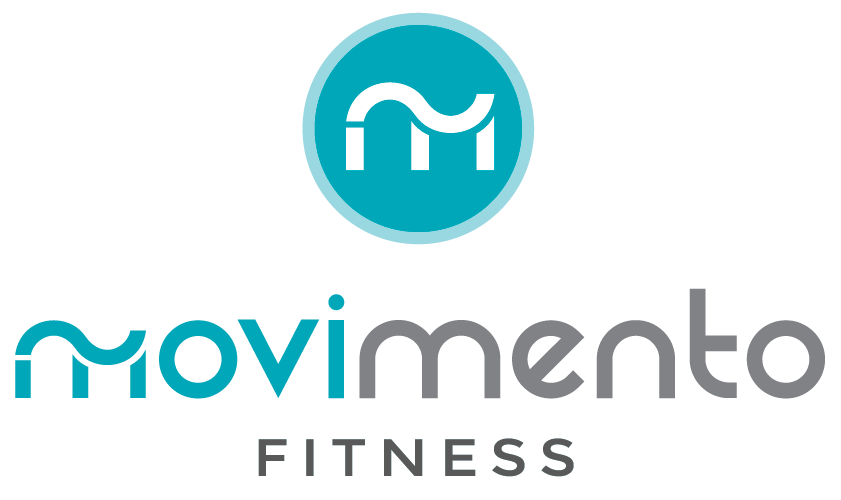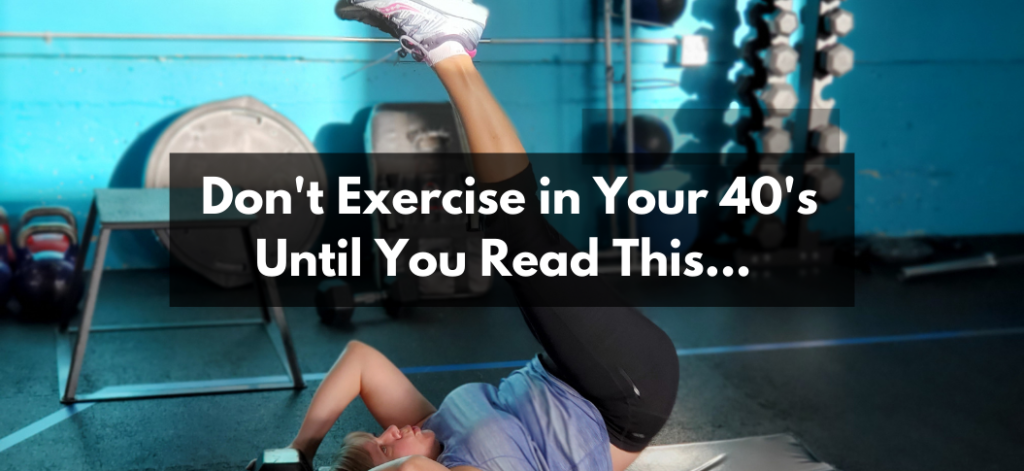Starting an exercise program can be exciting, but it can also be nerve-wracking and feel a little scary.
One wrong move and you could end up hurting yourself! You don’t want to lose all the time and money you’ve invested in getting started, not to mention the courage you’ve built up to get going again!
In this post, you’ll learn 7 steps to start any exercise program that will keep you safe and help you reach the results you want.
STEP #1 – Do More Than Just Cardio
When you enter the gym, your first move may be to head right to the cardio station. Walking, running, hitting the bike, and cruising on the elliptical is great! Getting your cardio in improves your stamina, increases endorphins, and can be a fast way to get your sweat on! But it’s not enough—especially as you age.
To reach your full potential and protect your body, you need to do both cardio and strength training.
Doing both cardio and strength training is so important, especially for those over 40 who experience osteoporosis, menopause, muscle loss, or strength loss. Building your muscles through strength exercises stabilizes muscle groups, which can help prevent falls, and builds muscle groups that help you move faster during your cardio sessions.
So, what is strength training and what does it look like in the gym? Strength training is a series of exercises that strengthen your muscles and increase your endurance. These exercises can simple movements include squats, dumbbell curls, or step-ups. It doesn’t have to be complicated!
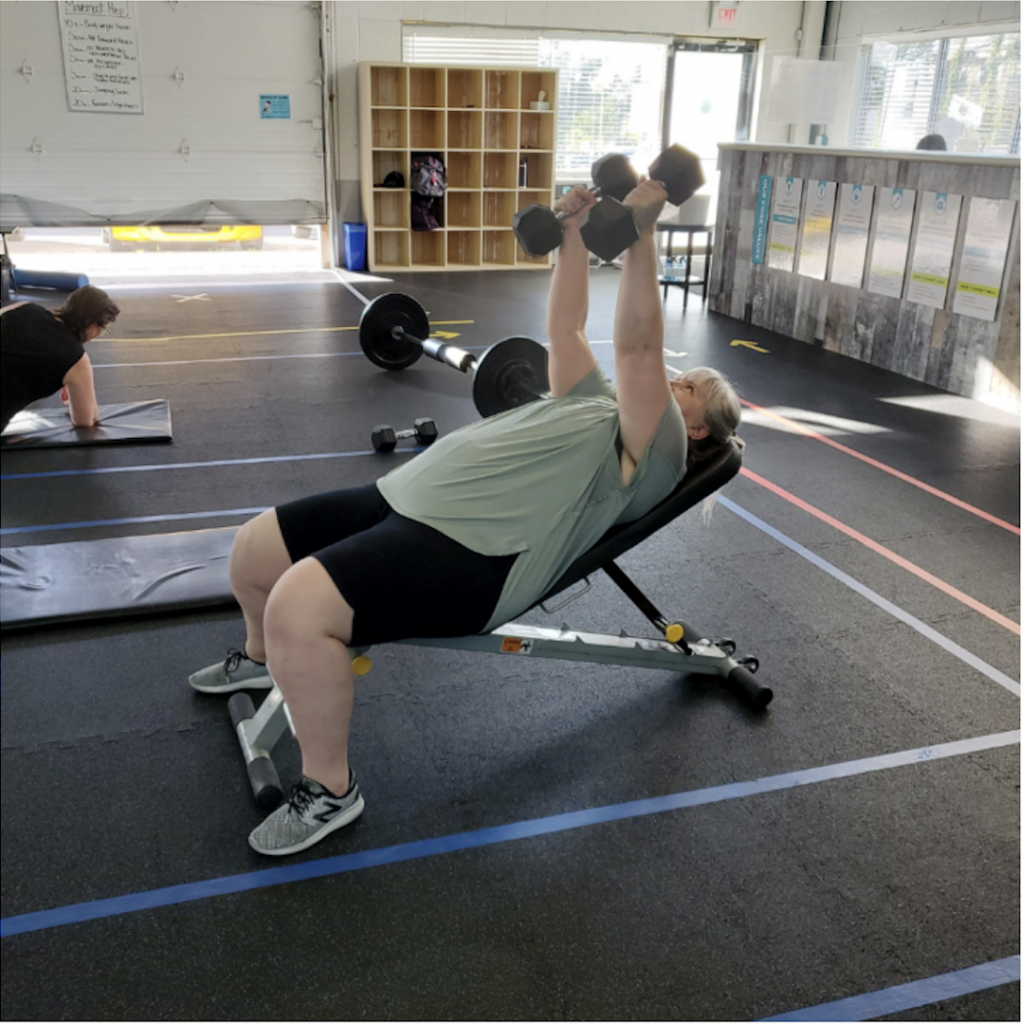
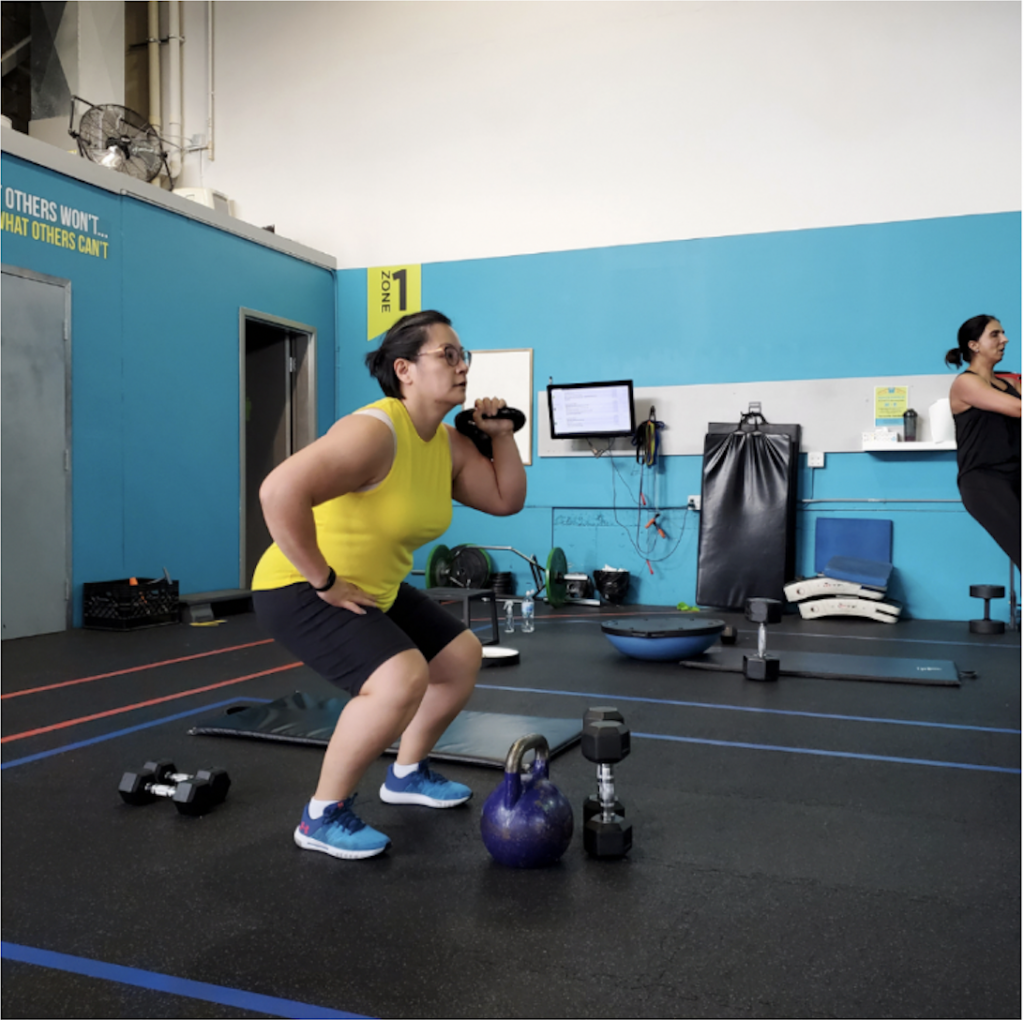
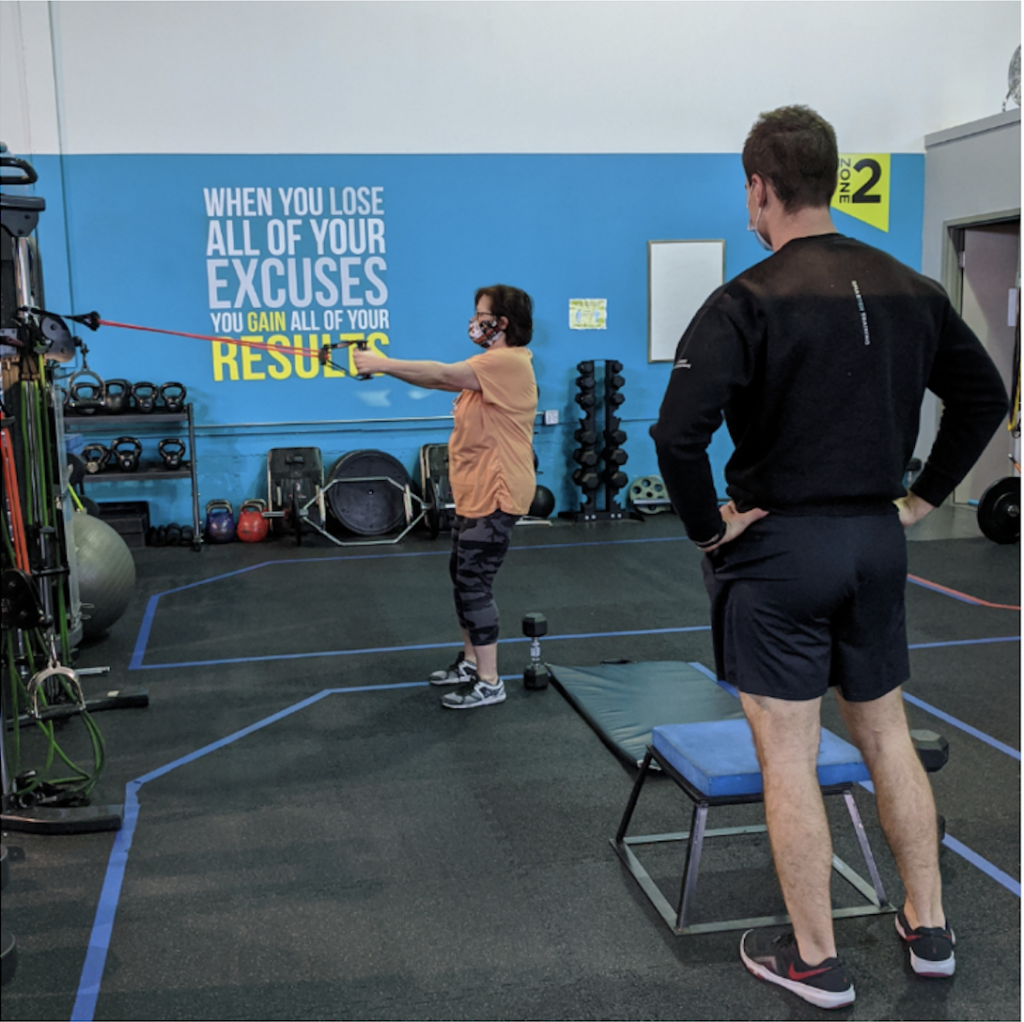
STEP #2 – Start at Your Current Fitness Level
Gone are the days of Jane Fonda and Jazzercising in Spandex leotards (for the most part), but there are a ton of exercise trends out there that claim to get you the perfect body in mere weeks. From DJ spin classes to goat yoga to 7-minute Instagram abs—there are so many claims about what is the “best” way for you to get in shape. But what is best for you?

As our body ages, it reacts to our activities and environments differently than it once did in spry youth. Maybe you used to run marathons and pump iron every day between classes in your high school or college years. Can you still do that today? If your answer is no, that completely makes sense! You are not that version of yourself. You are today’s version of yourself.
What are you able to do today?
Today, start with fundamental exercises that build your muscles and your endurance so you can move stronger and for longer. It can be as simple as starting with squats and wall push-ups. It doesn’t have to be fancy. The goal is to build and create progress.
It doesn’t matter what you “used” to do, what matters is what you can do right now.
STEP #3 – Get Professional Guidance
On your fitness journey, you may have an idea of where you’re heading. You have the destination in mind and goals in sight. But how do you get there?
If you are new and going it alone, it can take you more time to plan your workouts than actually do the work! And, once you finally hit the gym it can be difficult to know if you are doing the right thing or if you have the right form or even what to do. Are you heading in the right direction?
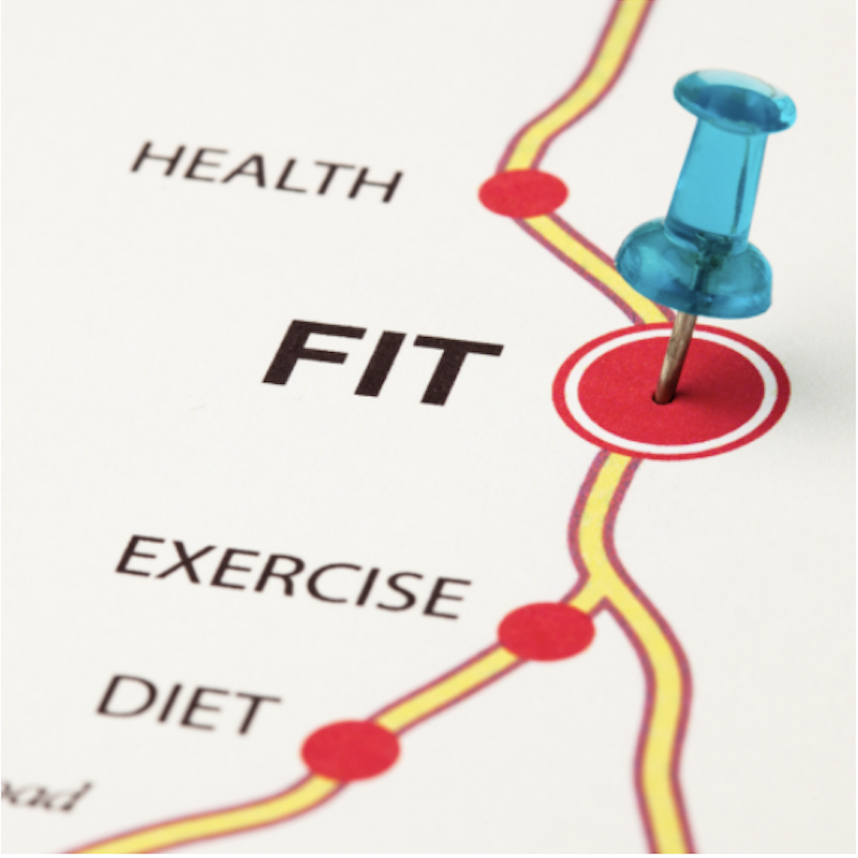
And what if you make a wrong turn? What happens if you make a mistake during an exercise and injure yourself? Between your commitments with your kids, your career, or your elderly parents, you cannot afford to risk getting hurt.
This is where professional guidance can help you. Having the right guidance is like having a GPS direct you for each turn (with minimal traffic) to get you to your destination.
Professional guidance from certified trainers who have years of experience tailoring programs to help you achieve your goals. They understand that not everyone has the same goals or are traveling the same road, so they will plan your route to make sure you get to your destination faster and with fewer bumps along the way.
STEP #4 – Make Sure Your Fitness Professional Is… Well… Qualified…
So, how do you choose which fitness professional is qualified to help you?
There are so many individuals out there claiming that they have the right plan and solutions for you. There is no regulation in the fitness industry, so anyone can claim to be a “professional.” Fitness education varies widely from weekend training certifications to 4+ year degrees.
That 20-something fitness influencer on social media may seem like they know what they’re doing, but they may not know what’s best for your body.
To find the best fit for you, the key is to ask questions.
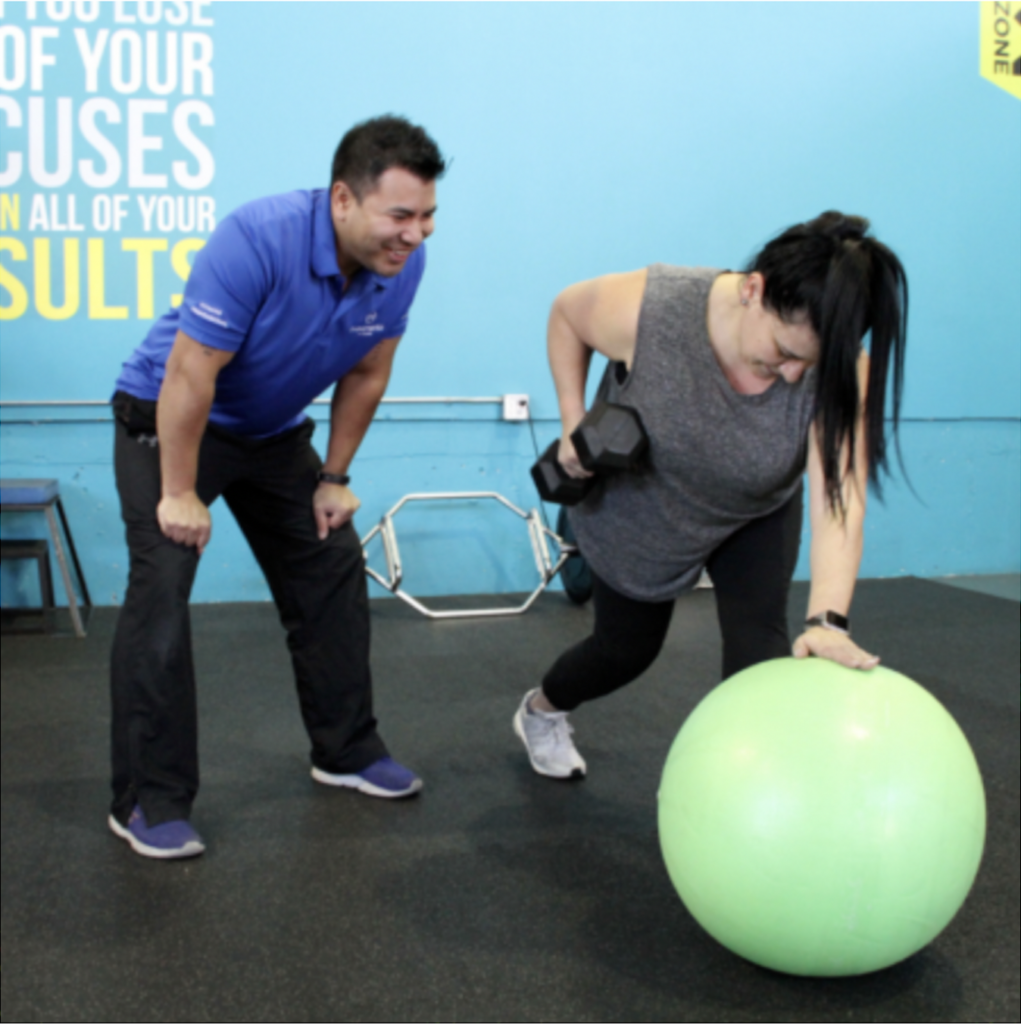
Ask what kind of education they have in exercise science, anatomy, and nutrition. Ask what they’re doing to upgrade their knowledge each year. Are they trusted by other health professionals such as physios, chiros, and general practitioners (MDs)?
Your fitness professional should always be updating their knowledge and actively participating as a part of the health and fitness community so they can utilize that expertise for your workouts.
Most importantly, your trainer should listen to you and your needs. If they have quality education and knowledge, they will be able to tailor you a set of directions that gives you the best route to meet your destination. They can make this plan and journey be a sustainable one for you.
Here at Movimento Fitness our team is experienced in working specifically with members in their 40’s, 50’s, 60’s and beyond so you can rest assured that we that we are experienced in working with various health conditions and limitations. We have kinesiologists on staff and take great care in designing programs for each individual client taking into account health issues, injuries, and limitations. It’s never just “whatever” workout comes to the trainer’s mind on the day you are in for a session. Your programs are planned out weeks at a time, and we are always assessing your movements and progress, so that we can help you to continually move better and reach your specific health and fitness goals effectively and safely.
STEP #5 – Follow A Consistent Plan That You Can Stick To
Once you have discussed your goals with your trainer, you must create a workout plan that you can commit to.
Start with the warm-up! Warming up safely activates your muscles and gets you mentally prepared for the workout ahead. A warm-up should prime your body for the upcoming strength movements ahead and get your blood pumping! Warming up decreases your chance of injuries during your workouts because your muscles are warmer and more pliable rather than going into it cold and rigid.
Once you’re warmed up, your muscles are ready to take on some weight. It’s ideal to move right to strength training after a warm-up, rather than into cardio, as your body is activated, but not over-exhausted from a cardio session.
After you’ve hit the weights, it’s time to get the blood flowing again with your cardio session! Leaving your cardio portion for the end of your workout makes sure that you’ve used most of your mental energy focusing on the specific muscle groups during strength training. Cardio exercises will get your endorphins going and help stretch out the muscles you’ve built at the beginning of your workout.
Finally, it’s time to stretch out and cool down after all the work you’ve put in! Taking time to cool down, rather than run right out of the gym onto your next activity, allows your muscles to relax, which prevents injury.
No matter what you do, the key is staying consistent for each workout. If you’re constantly switching up your workout routine, you won’t have time to build on specific muscle groups and you won’t see the results you want.
STEP #6 – Set Your Workout Schedule Wisely
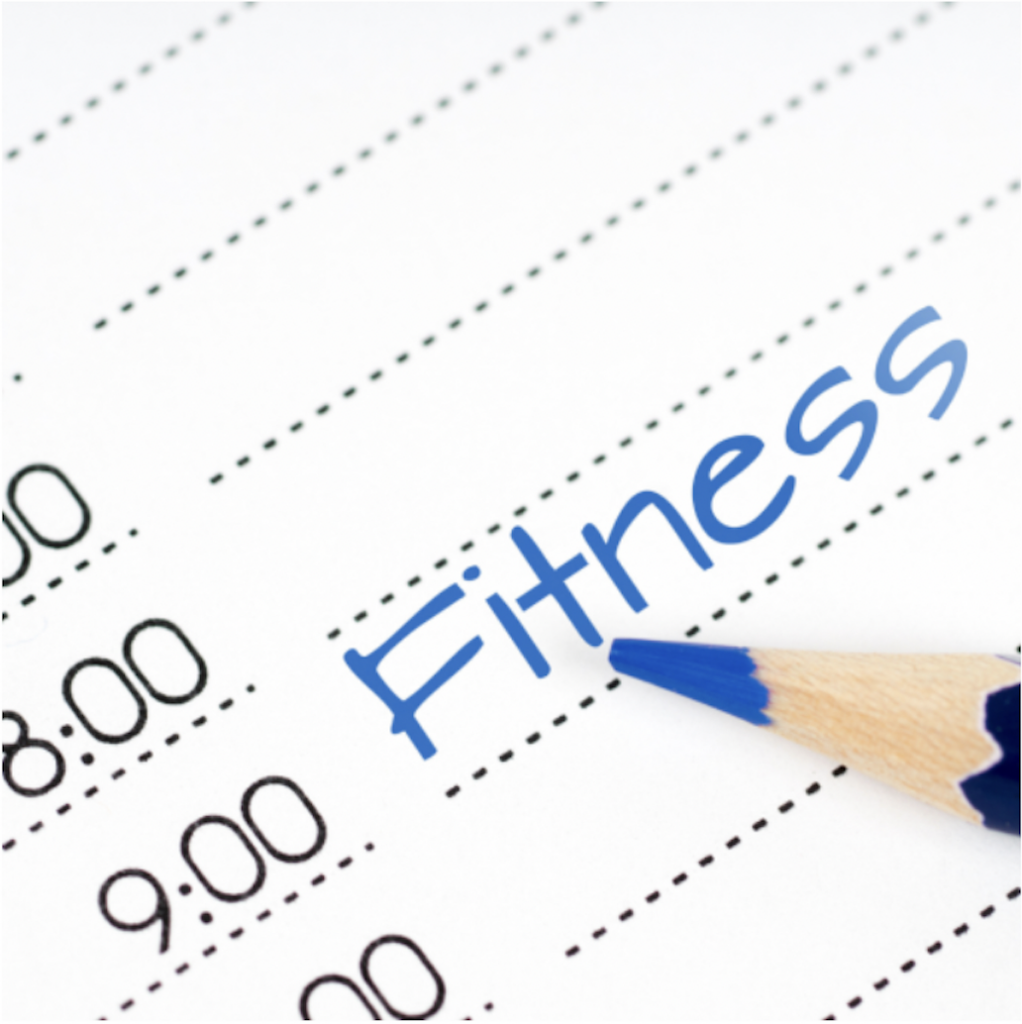
So you’re ready to hit the gym. You’re excited. You have a ton of free time in your life right now! So let’s go!
The fastest way to achieve results may be forcing yourself through soul-crushing, high cardio workouts every single day that leave you with nothing when you’re done.
But will you be able to sustain that?
What if life throws you a curveball (you know that happens right…) and you can’t make it to the gym?
Think about your life, your work, your responsibilities, and build a plan that you can stick with on your busiest weeks when your motivation is at its lowest. Can you commit to exercise 2 hrs a week? Just two 1 hour workouts? Great. START THERE!
You need a workout schedule that you can stick to and that is feasible for you.
Your goal should be 2-3 times per week consistently, rather than going to the gym 4 days in a row, then not at all for weeks on end. Create a plan that gets you excited to head to the gym and that will help you build on your progress and results.
Within that plan, you also need to account for rest. The body cannot build and if it does not take time to rejuvenate. Get rid of that “no pain, no gain’ mentality and create time to recuperate after working hard at the gym!
STEP #7 – Eat Better to AVOID injury
The old saying “you are what you eat” shouldn’t define your worth—but what you eat does affect how much you’ll get out of a workout.
Are you hitting the gym multiple times a week and not seeing the results you want? What are you eating?
Using exercise an excuse to overeat whatever you want whenever you want won’t help your progress in the long run. It has been tried, tested, and proven for many decades…

During your workout, your muscles are activating and building. They need fuel (aka food) with nutrients for material to build with. What you exert during your workout, food and nutrients replenish and repair after a workout.
Filling yourself with high fat and high sugar food will make you feel better in the short term as they cause blood sugar spikes that make you feel energetic again, but they don’t contain the nutrients your body needs to build.
So, what to eat?
What you’re looking for are foods that are high in nutrients. Veggies and white meats are a good place to start. You can also look to add eggs, kale, garlic, and potatoes, avocado, and salmon to your diet.
Foods rich in Omega 3s such as tuna or salmon can help protect your brain’s function and development by boosting blood flow to the brain. This is especially important to protect as we age. One 2018 study says “adults with higher blood levels of Omega-3’s from seafood were more likely to live longer and happier lives.”
These healthy foods don’t have to taste bad either. Check out our blog post that has a healthy twist on 3 traditional favs.
The key to getting these nutrient-high foods into your diet is planning. It’s easy to stop at a fast-food joint when you’re on the fly, but planning ahead will help you make healthier choices.
Here at Movimento Fitness, we specialize in working with members over 40+ and are dedicated to helping you live life strong, confident, and without limitations. With customized programs build entirely for you – focused on your fitness level and needs – combined with expert coaching and support – we can help you reach your health and fitness goals.
Our 6 Week Stronger For Longer Program is the perfect first step => Learn More Here <=
